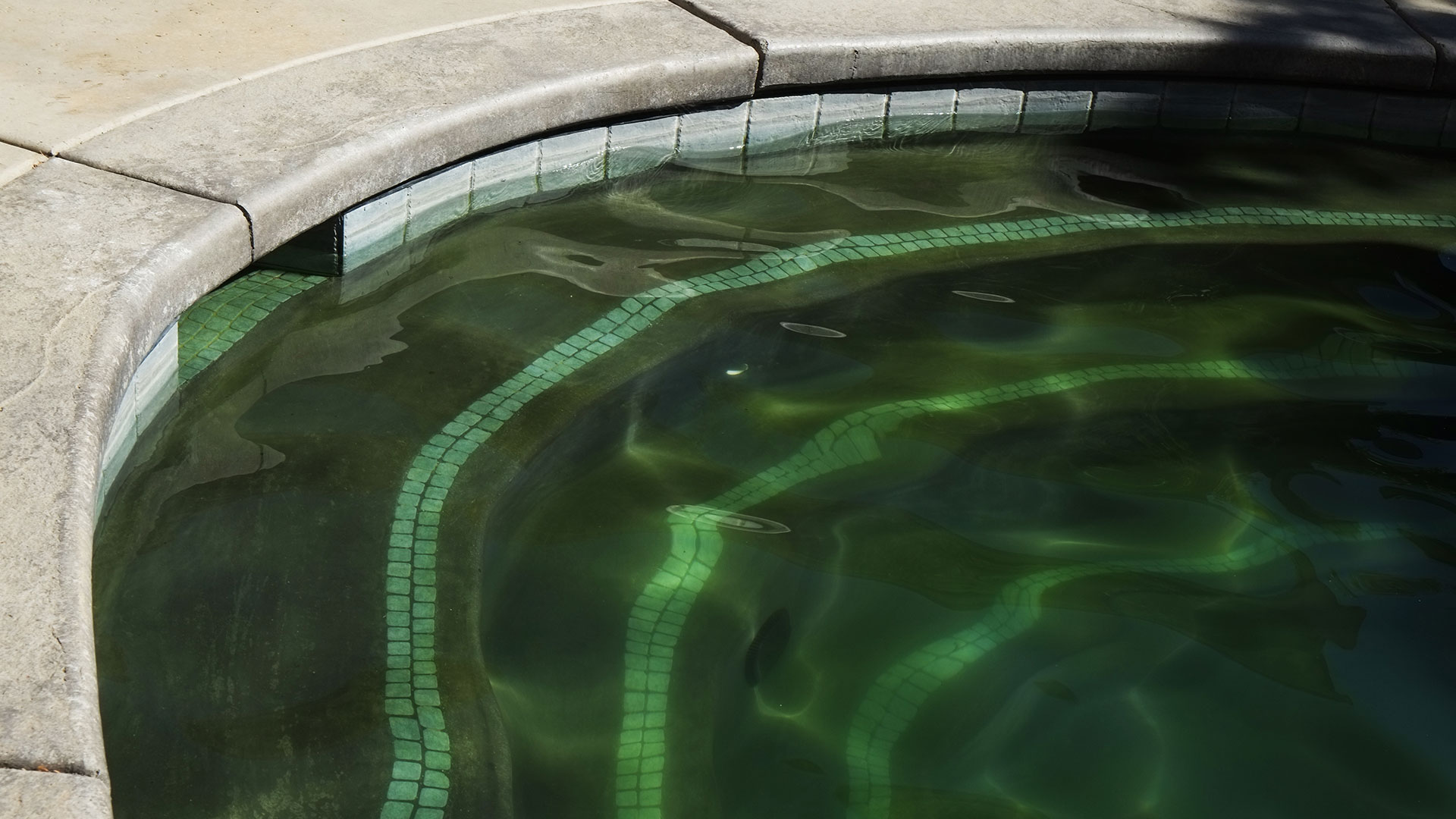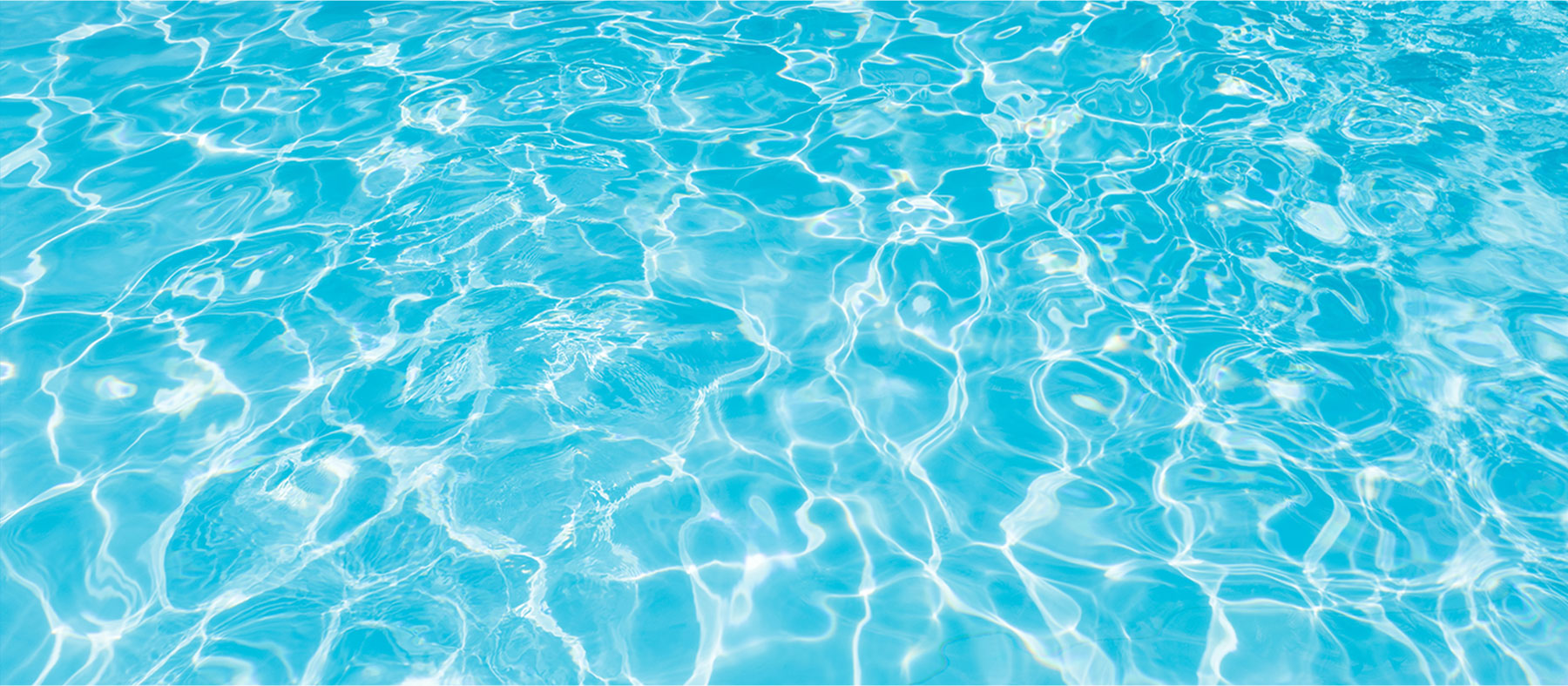
14 Dec How to Treat Pool Algae
Pool Algae, Oh No!
If you’ve come out into the backyard to enjoy a swim in your pool and noticed a greenish tint to the water, you’re unfortunately dealing with pool algae. Algae blooms can be caused by several different factors, but treatment can be quite simple. If you catch it quickly.
Different Types of Algae
One thing to be aware of when starting to treat a discolored, algae-filled pool is that there are a number of different types of algae. Algae might look green, black, red, or mustard yellow. The yellow algae is the hardest to treat. Green algae is the most commonly seen algae in Austin and is relatively easy to treat on your own.
What Causes Pool Algae
Once you’ve got pool algae, your only option is to treat it. But there are several ways to stay ahead of algae and to prevent it from forming. Knowing what causes pool algae is the first step in making sure you never get an algae bloom in your pool.
In general, pool algae is caused by an imbalance in your water chemistry. This can be caused by a lot of rain, high pH levels, and stagnant water. Imbalanced water chemistry can also create an environment for dangerous organisms, such as E. coli.
- A lot of Rain
One of the easiest ways for an algae bloom to develop in your pool is after a big rainstorm. Not only does the rain create an excess of water in your pool, throwing off the chemical balance, it can also deposit debris and bacteria from the surrounding environment. After a big rainstorm, it’s important to check your pool’s chlorine levels to prevent the growth of algae. - High pH Level
The pH level of your pool ensures that the water is safe to swim in and prevents algae from growing. Your pool’s pH level should be maintained between 7.2 and 7.6. Checking your pool’s pH level should be part of your regular pool maintenance routine. - Stagnant Water
Stagnant water is the perfect medium for growing algae and other bacteria. Your pool pump prevents water from becoming stagnant by constantly circulating your pool’s water. If your pump stops working, is broken, or isn’t properly maintained, this can stop the water circulation and create the perfect environment for algae growth.
How to Treat Pool Algae
Knowing what causes pool algae is the first step in preventing algae. But what if you’ve already got algae? Luckily, most pool algae can be treated with the right pool chemicals and cleaning regimen. If you don’t want to treat your own pool algae, Crystal Clear Pools can help.
- Balance the pH Levels
If you see the color of your pool change to a greenish tint, your first step should be to check your pool’s pH level. If your pH level isn’t within range, get that balanced first. - Shock the Pool
Your next step in getting rid of pool algae is to shock the pool. While shocking your pool may sound intimidating, it’s actually quite simple. Shocking your pool simply means sanitizing it with some extra chlorine.It’s best to shock your pool at night as sunlight can make it less effective. Be sure to run your pool pump for 24 hours after shocking the pool to ensure rapid and equal distribution of the chlorine. If you have questions about shocking your pool, give us a call at (512) 339-9304.
- Add an Algaecide
Another potential treatment for pool algae is using an algaecide. You can use an algaecide on its own or in combination with shocking your pool.An algaecide isn’t always necessary when treating pool algae, but if you’ve got a severe case, it might be needed. If your pool is prone to seasonal algae blooms, an algaecide can also be used as a preventative treatment for algae.
- For Severe Cases: Drain and Power Wash
If you’ve tried every other step to treat an algae bloom and it’s still not under control, it might be time to bring out the big guns. The power wash. This step is extreme and will be time-consuming, so be sure to try other methods first.If you have persistent algae growth in your pool, it might be time to drain the pool and power wash all the surfaces. You’ll want to power wash it with a chlorine solution to remove debris and sanitize. When refilling your pool, be sure to add the right chemicals and treat with an algaecide to prevent algae growth.
- Call Your Local Pool Company
If you’re not sure how to treat algae growth in your pool or don’t have the time to try these different treatments, you can also call your local pool experts to help. Crystal Clear Pool’s swimming pool specialists are available to treat pool algae throughout the Greater Austin area.
How to Prevent Pool Algae
While it’s possible to treat an algae bloom and clear it up, it’s best to prevent the algae from growing from the start. There are a number of ways to prevent algae growth.
- Keep Your Pool Clean and Balanced
The number one way to prevent an algae bloom in your pool is to keep your pool cleaned, brushed, and chemically balanced. We offer pool maintenance options, giving you more time and peace of mind. - Regularly Clean Pool Filters
Clean pool filters ensure proper filtration which leads to a cleaner pool. The cleaner your pool, the less likely you are to get an overgrowth of algae. Keep your pool filters clean to help prevent the growth of algae in your pool. - Swim!
One of the best ways to keep your pool healthy is to swim in it. Swimming stirs up debris, which pushes it towards the skimmer baskets and automatic pool cleaner, which keeps your pool clean. Regular swimming should be part of your routine pool maintenance.If you think you’ve got pool algae, the sooner you can treat it the better. Whether it’s a big rainstorm or just the tiniest hint of green in your pool, the faster your treat it, the more likely you’ll be able to get rid of your pool algae.




